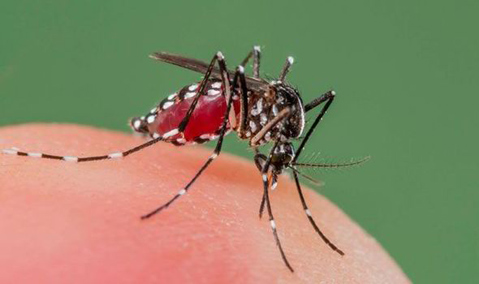Zika Infects 14 in Florida
Virus-Transmitting 'Skeeters in 12 California Counties, but Not Santa Barbara

With news that Florida now has 14 reported cases of locally transmitted Zika virus, the possibility that the disease could spread throughout the nation is a growing concern. So far, there have been zero reported cases of Zika in Santa Barbara County, according to Dr. Charity Dean, physician health officer in the county’s Public Health Department.
The Centers for Disease Control and Prevention (CDC) has identified two species that transmit the virus: the Aedes aegypti and Aedes albopictus, which are commonly referred to as the yellow fever mosquito and the Asian tiger mosquito, respectively. These species have been identified in 12 counties throughout California but have yet to be found in Santa Barbara County, according to David Chang, general manager for the Mosquito and Vector Management District of Santa Barbara County. While there have been cases of imported Zika virus in California there are currently no cases of the disease being locally transmitted.
Even with the absence of the disease-spreading vermin in the county, Santa Barbara is not out of the danger zone. “There’s a very good chance that we will have people that test positive for Zika in Santa Barbara County who are returning from travel to another area that has Zika,” Dean said.
One of the problems with controlling the spread of the disease is that the Aedes species are “aggressive, day biting mosquitoes that thrive in urban city areas,” Dean said. They are able to breed in waters as small as a soda bottle cap, she said.
In terms of prevention, Dean said all individuals who return from a region known to carry Zika should be tested by their physician. The Zika test is administered via blood or urine examination. While at a known Zika region, people should undertake efforts to avoid bites such as putting on mosquito repellant and wearing long sleeved pants and shirts.
Pregnant women should be particularly attentive, she said. “The recommendations for pregnant women is … [to] avoid travel to any region that has local Zika virus transmission,” Dean said. That now includes the Wynwood neighborhood of Miami, Florida, making this the first time the CDC has recommended against traveling to a U.S. region in nearly 20 years, Dean said.
As of July 21, there have been 433 reported pregnancies in the U.S. in which the mother is a carrier of Zika. As of the same date, there have been 13 reported cases in which the child suffered from Zika-related birth defects. Mothers worried that they might have transmitted Zika to their newborns now have the option of having their child undergo a neonatal test, Dean said.
With news of the first female-to-male sexual transmission of Zika last month, health officials are wary of the prospect of increased virus spread. It had previously been thought that the disease could only spread from male-to-female or male-to-male.
Santa Barbara County’s Vector Management has been actively setting up mosquito traps throughout the county in search of the Aedes species, Chang said. So far, none have been found.
During the month of June, Vector Management set 19 mosquito trapping surveys across the county. Two types of tests were used: the carbon dioxide–baited encephalitis virus surveillance traps and human-scented Biogents-Sentinel traps.
The encephalitis traps release carbon dioxide in order to mimic human breath, while the Biogents-Sentinel traps mimic the smell of human flesh. While professionals have stated that the human-scent traps are better at capturing mosquitoes, they’re more expensive, coming in at $200 a piece, Chang said.
The district caught 1,720 mosquitoes and submitted 99 sampling pools for testing of various viruses, Chang said. The testing did not look for Zika since Aedes species mosquitoes were not found.


